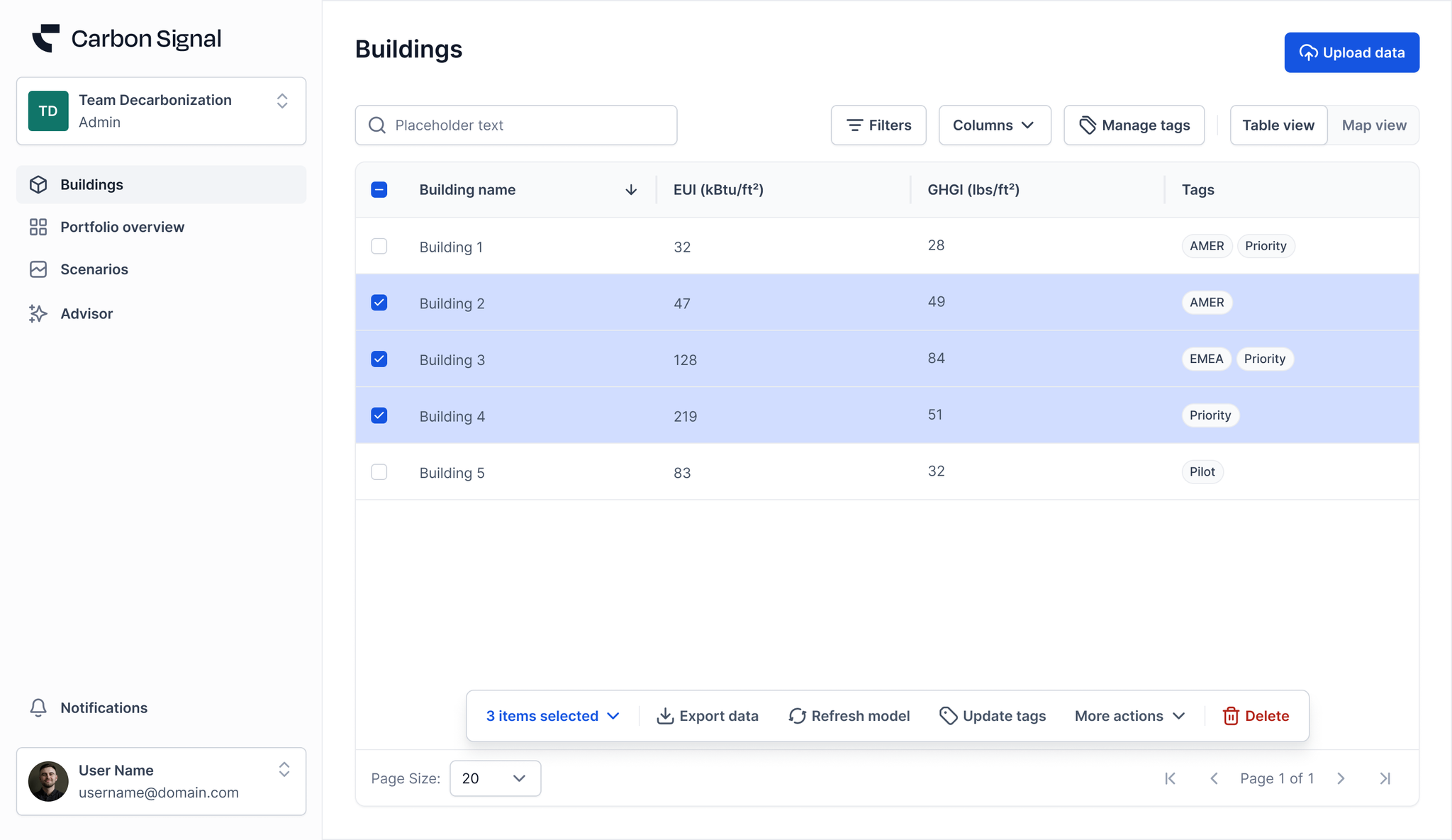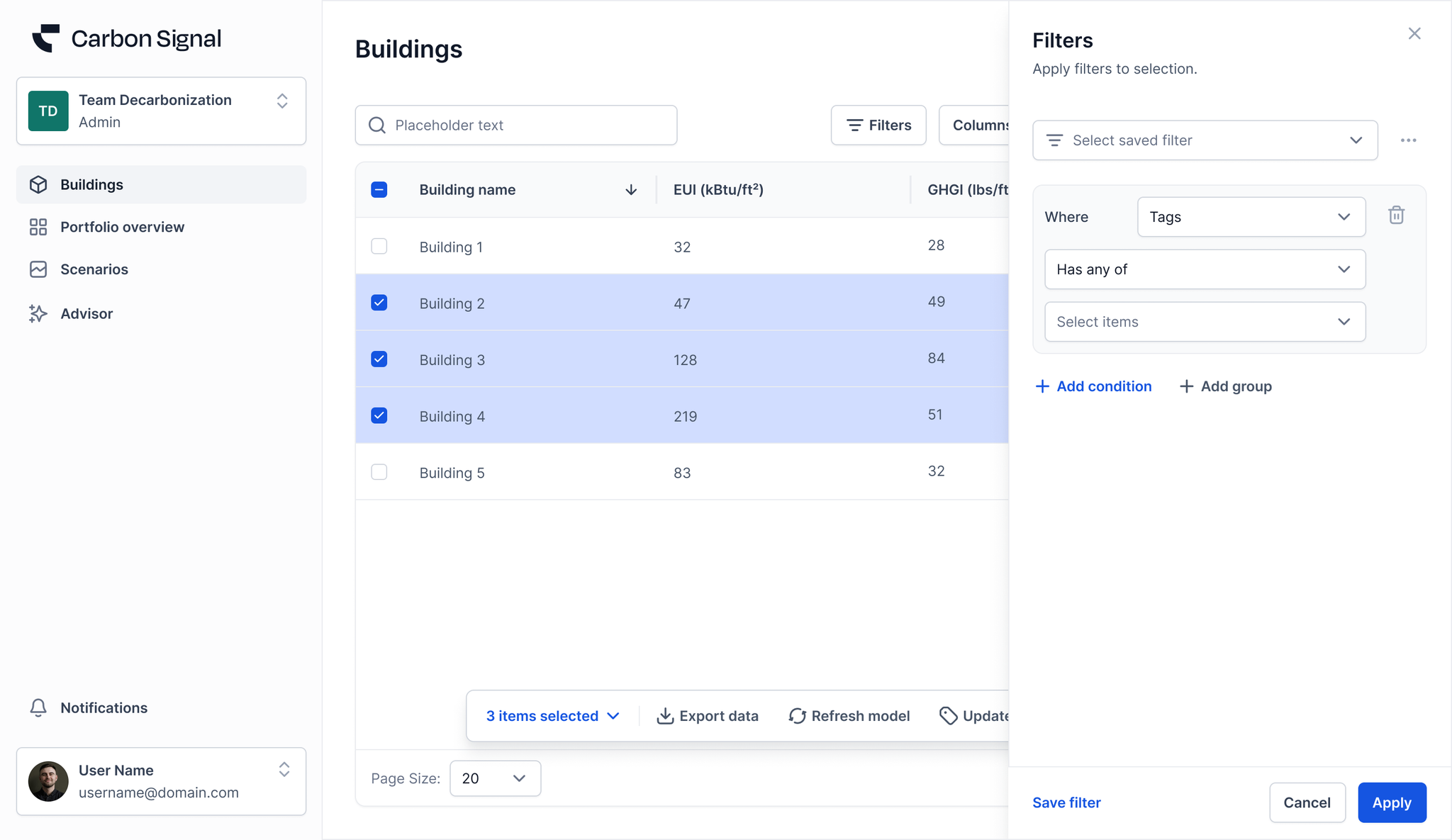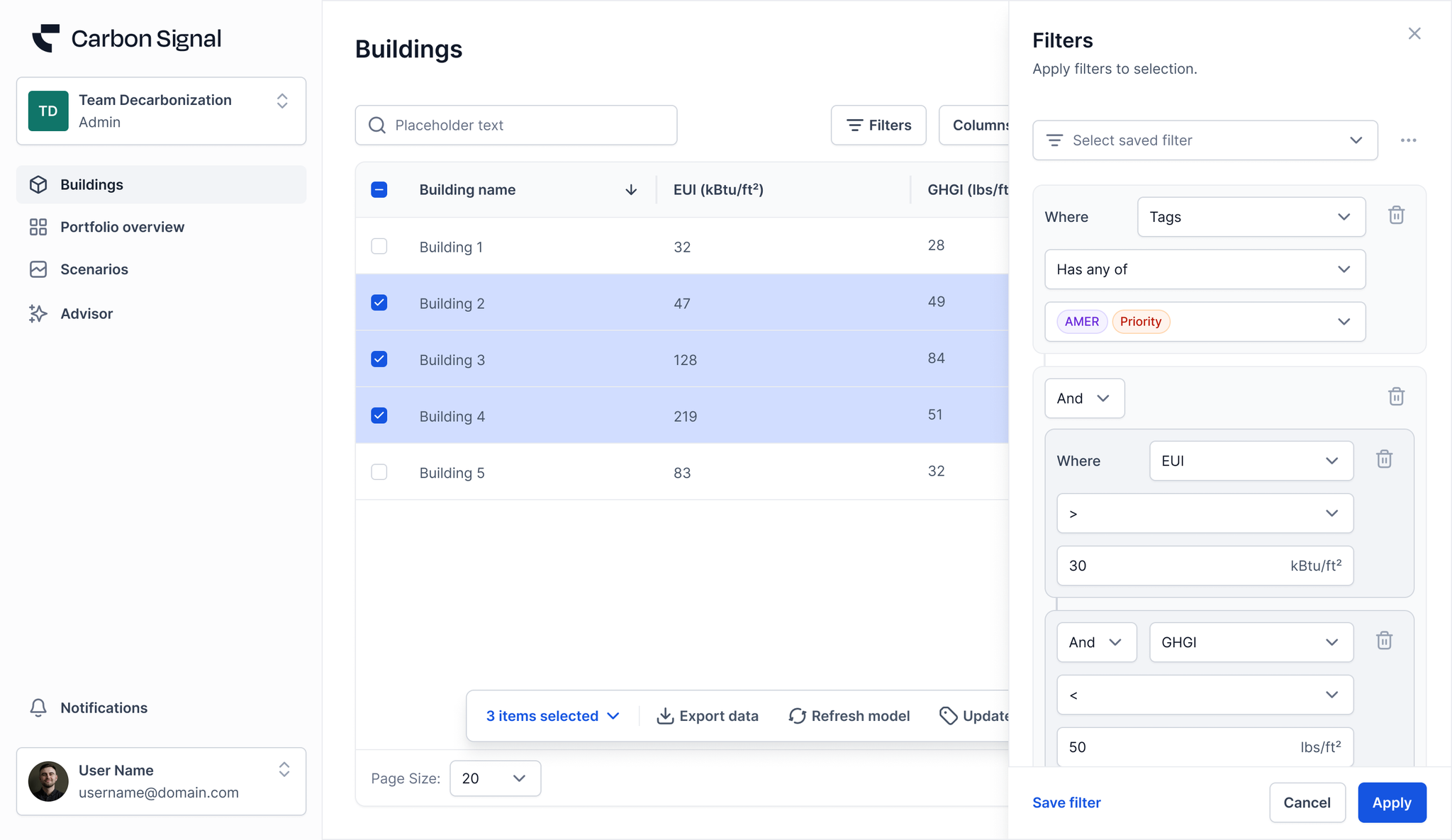The Advanced Filtering feature allows you to build customized filters using multiple conditions and Boolean logic (
AND/OR) to precisely search, segment, and analyze your building portfolio.This functionality supports a wide range of applications, including:
- Preparing for regulatory disclosures by isolating buildings based on emissions, Energy Use Intensity (EUI), or geography
- Identifying high-impact opportunities for carbon reduction by filtering for energy- or emissions-intensive buildings
- Segmenting your portfolio by geography and tags such as building type

Overview
Advanced Filtering lets you apply one or more conditions across various building attributes. These conditions are grouped into Condition Groups, which support logic-based queries using
AND or OR operators.- Within a Condition Group, all conditions must use the same Boolean logic (AND or OR).
- Between Condition Groups, you can choose either AND or OR to define how groups relate to each other.
This enables the construction of highly flexible queries, such as "Find buildings that meet criteria A or (criteria B and criteria C)."
Available Criteria
Each condition can target one of the following building attributes:
- Name
- Tags
- Status
- Country
- City
- State
- Area
- Emissions
- Greenhouse Gas Intensity (GHGI)
- Energy Use Intensity (EUI)
Available Operators
For categorical or text-based fields such as Tags or Country, the following comparison operators are available:
- Is – matches exact value
- Is Not – excludes a specific value
- Contains – matches if the value includes the specified text
- Does Not Contain – matches if the value does not include the specified text
- Starts With – matches if the value begins with the specified text
- Ends With – matches if the value ends with specified text
For numerical fields, such as Area or Energy Use Intensity (EUI), the following comparison operators are available:
- = - matches if the value is exactly equal to the specified value
- > – matches if the value is greater than the specified value
- < – matches if the value is less than the specified value
- ≥ – matches if the value is greater than or equal to the specified value
- ≤ – matches if the value is less than or equal to the specified value


Using Condition Groups
- Add a Condition Group
Click “+ Add Condition Group” to create a logical block of filters.
- Specify Your First Condition
- Select the criterion, operator, and value to define this initial condition.
- To add another condition within the same group, click “Add Condition”.
Each new Condition Group starts with one condition by default.
- Set Condition Group Logic
- AND: All conditions in the Condition Group must be true for a building to match
- OR: At least one condition in the Condition Group must be true for a building to match
If your Condition Group contains more than one condition, you will be required to select either AND or OR logic.
- Combine Condition Groups
When adding multiple Condition Groups, set the logic (AND or OR) that defines how those groups interact.
Example
Local Law 97 (Regulatory) Readiness
- Group 1 (AND):
- City Is New York City
- Tags Contains Office
- Area > 25,000 ft²
- GHGI > 5.93 lb/ft²
(OR)
- Group 2 (AND):
- City Is New York City
- Tags Contains Multifamily
- Area > 25,000 ft²
- GHGI > 7.38 lb/ft²
This query identifies buildings in New York City that require emissions reductions to comply with Local Law 97 in 2030:
- Office buildings over 25,000 ft² with GHGI > 5.93 lb/ft²
- Multifamily buildings over 25,000 ft² with GHGI > 7.38 ft²
This query is useful for flagging buildings that are likely to need energy efficiency retrofits or other emission-reducing interventions to meet compliance requirements.
